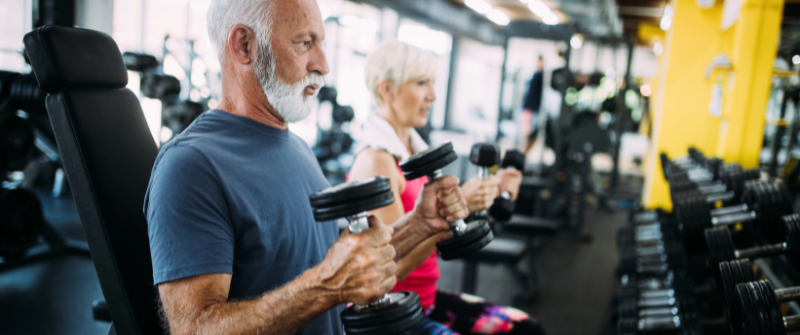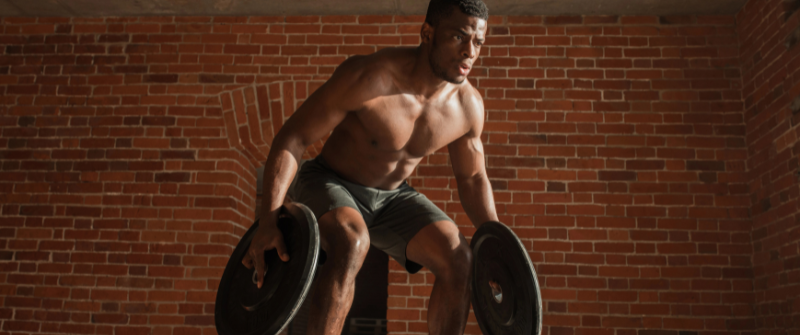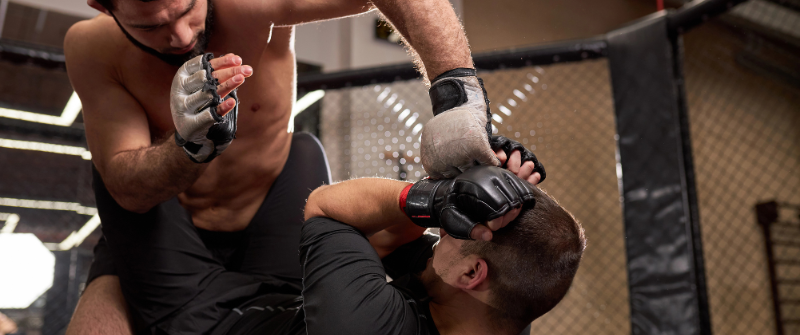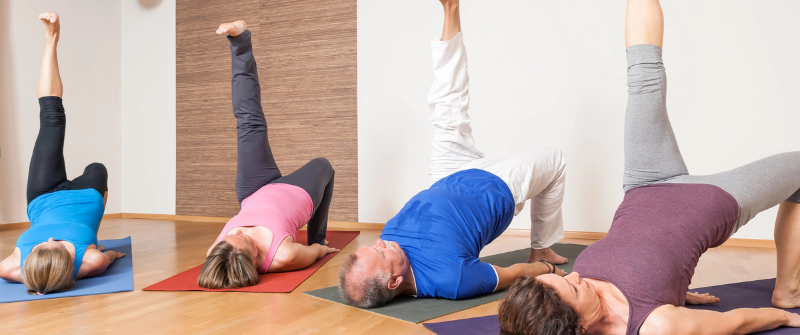
- by NEXO Team
- November 3, 2025
If you’ve noticed more gray hair in your morning classes, you’re not alone. Across the country, adults over 60 are showing up for strength, mobility, and independence. They’re not chasing personal records; they’re training to live fully. This shift has made senior functional fitness one of the fastest-growing parts of the industry.
These programs aren’t about intensity; they’re about purpose. Movements like squatting, reaching, and lifting groceries translate directly into everyday life. For gym owners, this new audience can be deeply rewarding, but it also requires planning. Designing sessions that are safe, structured, and properly insured ensures seniors build strength without unnecessary risk.
What Makes Functional Fitness Work for Seniors
Older adults don’t need to reinvent how they move; they need to rebuild confidence in motion. Functional exercises, pressing, pulling, carrying, mirror daily activity, and restore balance, coordination, and self-reliance.
When seniors learn how to hinge correctly, step with control, or stabilize under load, they start to feel capable again. That’s why functional training works. It doesn’t isolate muscles; it reconnects people with how their bodies are meant to move. Over time, these habits reinforce independence, reduce fall risk, and boost overall quality of life.
The best programs don’t push limits; they expand them safely.
Understanding the Senior Athlete
Every participant comes with a story. Some have artificial joints. Others manage hypertension, arthritis, or heart disease. Many take medications that can change balance or energy levels.
Coaches who work with this group need to know those details before the first session begins. Medical clearance and intake forms aren’t just paperwork; they’re safety tools. A conversation about health history, movement confidence, and personal goals helps set the right pace.
Good communication keeps everyone aligned. When clients understand that you’re paying attention, they relax, move better, and trust you more. Pair that with senior gym liability insurance, and you’ve covered both the human and legal sides of safety.
Also Read: Mastering Functional Fitness: Essential Benefits and Strategies for a Healthier You
How to Design Programs That Keep Seniors Moving Safely
There’s no universal formula for training older adults. What works is structure and respect for pacing. Every plan should feel achievable, challenging, and secure.
- Start with a movement screen. Observe balance, joint mobility, and coordination before loading anything.
- Progress gradually. Replace jumping or high-impact drills with stable, joint-friendly movements like step-ups, band pulls, or controlled carries.
- Coach with patience. Cues should be calm, direct, and specific. Seniors respond best when feedback feels collaborative, not corrective.
- Add in recovery. Rest is part of the program. It’s how the body adapts.
- Warm up and cool down intentionally. Gentle mobility drills, breathing exercises, and light activation exercises go a long way toward maintaining joint health.
Consistency beats intensity. That’s the mindset that keeps seniors coming back.
Coaching With Awareness
The tone of your coaching matters as much as the programming. A senior class thrives on clarity and encouragement, not intensity cues. Notice effort, celebrate progress, and stay observant.
Keep an eye on vitals, watch for fatigue, and adjust as needed. Pair new members with confident peers who model good form; it builds comfort faster than any lecture.
When instructors lead with empathy and structure, seniors feel capable instead of cautious. That’s when training becomes transformation.
Also Read: Functional Fitness vs. Traditional Training: What’s Best for Long-Term Results?
Creating a Space That Feels Safe
For older clients, confidence starts the moment they walk in. Lighting, flooring, and clear walkways influence how secure someone feels moving through your gym.
Equipment checks should be routine, not reactive. Lighter kettlebells, resistance bands, and balance tools should always be within reach. Post visible safety reminders and keep emergency contacts up to date.
The goal is to make safety feel natural, not like a restriction, but part of a well-run environment. Solid coverage through senior gym liability insurance adds another layer of assurance that you’re protecting both people and business.
Liability, Insurance, and Peace of Mind
When your members are in their 60s, 70s, or 80s, risk looks different. Even light resistance work can cause issues if medical conditions go unmentioned or forms go unsigned.
That’s where comprehensive coverage matters. Senior gym liability insurance protects against injuries, coaching mistakes, and unforeseen accidents. It’s not about fear, it’s about preparation.
Independent coaches need their own policies. Those working within a facility should confirm they’re listed under the gym’s coverage. NEXO designs plans specifically for gyms offering functional fitness and group classes for older adults.
Add clear waivers and emergency information to your onboarding. It keeps everyone protected and informed.
Also Read: Insurance Myths and Facts for Functional Fitness Studios
Documentation and Staff Readiness
Thorough documentation protects both sides. Every participant should complete a pre-exercise screening (PAR-Q) and health form before their first class. Those forms guide training modifications and track changes over time.
Keep progress notes and incident logs organized and current. They’re invaluable for spotting trends and making informed adjustments.
All staff should maintain current CPR, First Aid, and AED certifications. Emergencies are rare, but when they happen, preparation is everything.
Responsible Marketing Builds Trust
Marketing to older adults is about respect. Skip the “anti-aging” tone and focus on vitality, confidence, and connection. Real stories carry more weight than numbers. Share testimonials from members who’ve regained mobility or energy through training.
Partnering with local healthcare providers, senior centers, or physical therapy offices builds credibility. Host open houses or “Intro to Movement” classes that allow newcomers to experience your approach firsthand.
Always represent what your program truly delivers. Transparency is what keeps trust and referrals strong.
Investing in Coaches
A safe senior program depends on educated coaches. Trainers who invest in continuing education, like the ACE Functional Aging Specialist certification, learn how to modify exercises effectively and communicate clearly.
Workshops on mobility, adaptive training, and communication skills help the team stay aligned. Encourage peer mentoring and internal training sessions. When coaches grow, your program grows with them.
The best gyms make learning part of their culture, not a checkbox.
Preparedness and Risk Control
A written emergency plan isn’t optional. It should outline exactly how to respond if an injury occurs or a member feels unwell. Review it quarterly. Run drills.
Record and review every incident, even minor ones, to identify patterns before they become problems. Share updates with your insurer to keep coverage accurate and up to date.
Risk management isn’t a burden; it’s a sign of professionalism.
Conclusion: Strong, Safe, and Supported
Functional fitness gives older adults more than strength, it gives them confidence in their own movement. With the right programming, skilled coaches, and solid protection, your gym can help members of every age train with purpose and safety.
NEXO helps gym owners and coaches protect what they’ve built. From liability coverage to risk management resources, NEXO supports fitness professionals who want to grow responsibly and focus on what matters most, helping people move better, live better, and stay strong for life.
Categories
Fill out a short form to contact us with your questions or to receive a customized quote.
Recent Posts
-
 NEXO’s Affinity Program: How Fitness Suppliers and Associations Can Partner for Profit and Protection
December 5, 2025
NEXO’s Affinity Program: How Fitness Suppliers and Associations Can Partner for Profit and Protection
December 5, 2025 -
%20(1).png) How to Insure an MMA Gym Without Paying for Coverage You Don’t Need
December 5, 2025
How to Insure an MMA Gym Without Paying for Coverage You Don’t Need
December 5, 2025 -
 Mastering Liability for Jiu-Jitsu Tournaments and Martial Arts Events
December 5, 2025
Mastering Liability for Jiu-Jitsu Tournaments and Martial Arts Events
December 5, 2025 -
 From Zen to Zoning: What Every Yoga and Pilates Studio Owner Should Know Before Signing a Lease
December 5, 2025
From Zen to Zoning: What Every Yoga and Pilates Studio Owner Should Know Before Signing a Lease
December 5, 2025 -
%20(1).png) Why Your Referral & Loyalty Program Can Impact Your Insurance Rates
December 5, 2025
Why Your Referral & Loyalty Program Can Impact Your Insurance Rates
December 5, 2025
